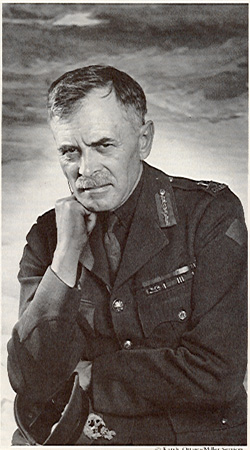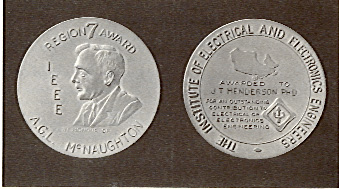General Andrew G.L. McNaughton is remembered by most people
as a military man who later became a member of the Canadian cabinet,
assuming the post of Minister of Defense. His many other contributions
to Canada are not realized. McNaughton was a graduate of McGill
University, holding the degree of Master of Science, with Honours in
Electrical Engineering. His interest in science resulted in the
invention of the cathode ray direction finder - the direct forerunner of
radar.
In the 1930's, with the characteristic enthusiasm he devoted to all his
undertakings, he secured Canada's place in civil aviation, represented
Canada at several important Commonwealth conferences, and established
army-administered work camps for the unemployed. Work done at these work
camps created a network of air fields which enabled the creation of
Trans Canada Airlines.
In 1935, he became president of the National Research Council, where he
remained until the second World War drew him into active duty again. In
August of 1945, McNaughton was named Chairman of the Canadian Section of
the Canada-United States Permanent joint Board on Defense. In 1946, he
was appointed not only the Canadian representative to the United Nations
Atomic Energy Commission, but also, President of the Atomic Energy
Control Board of Canada.
In January of 1948, McNaughton was appointed permanent delegate of
Canada to the United Nations and a representative of Canada on the
Security Council. In 1950, McNaughton became a Commissioner of the
International Joint Commission and shortly after, became its Canadian
Chairman. During his twelve year tenure of this position, the IJC
considered, among other major engineering projects, the development of
the St. Lawrence River for power and navigation, the best use of the
Columbia River for power in the west and the international tidal power
potential in Passamaquody Bay.

 page en français
page en français

